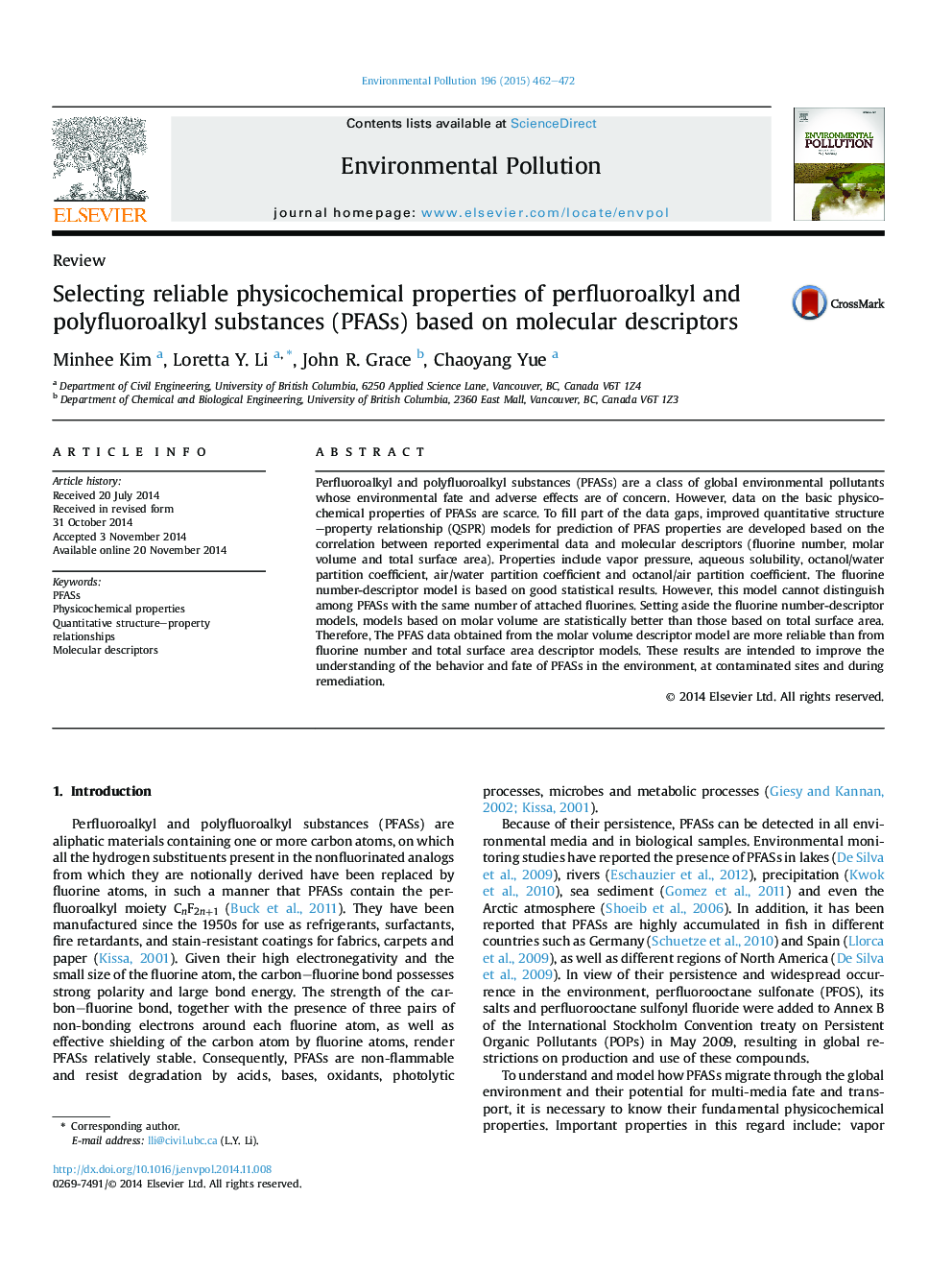| Article ID | Journal | Published Year | Pages | File Type |
|---|---|---|---|---|
| 6318000 | Environmental Pollution | 2015 | 11 Pages |
Abstract
Perfluoroalkyl and polyfluoroalkyl substances (PFASs) are a class of global environmental pollutants whose environmental fate and adverse effects are of concern. However, data on the basic physicochemical properties of PFASs are scarce. To fill part of the data gaps, improved quantitative structure-property relationship (QSPR) models for prediction of PFAS properties are developed based on the correlation between reported experimental data and molecular descriptors (fluorine number, molar volume and total surface area). Properties include vapor pressure, aqueous solubility, octanol/water partition coefficient, air/water partition coefficient and octanol/air partition coefficient. The fluorine number-descriptor model is based on good statistical results. However, this model cannot distinguish among PFASs with the same number of attached fluorines. Setting aside the fluorine number-descriptor models, models based on molar volume are statistically better than those based on total surface area. Therefore, The PFAS data obtained from the molar volume descriptor model are more reliable than from fluorine number and total surface area descriptor models. These results are intended to improve the understanding of the behavior and fate of PFASs in the environment, at contaminated sites and during remediation.
Keywords
Related Topics
Life Sciences
Environmental Science
Environmental Chemistry
Authors
Minhee Kim, Loretta Y. Li, John R. Grace, Chaoyang Yue,
